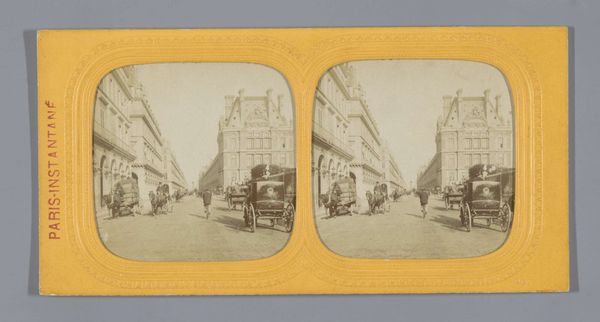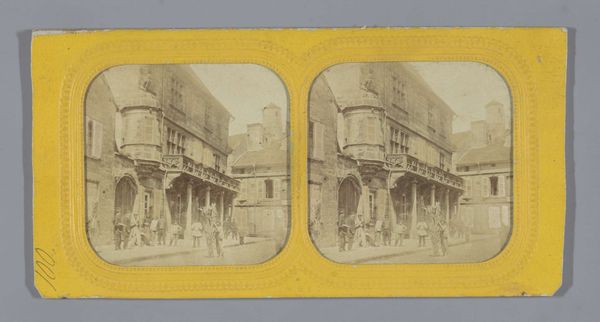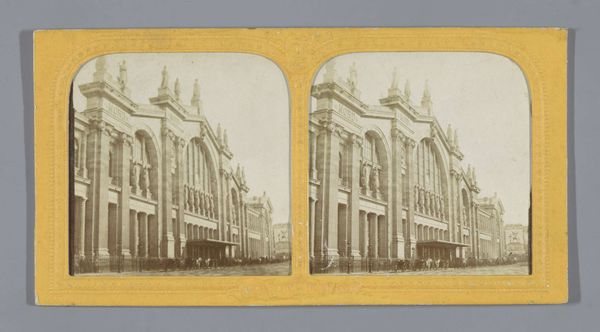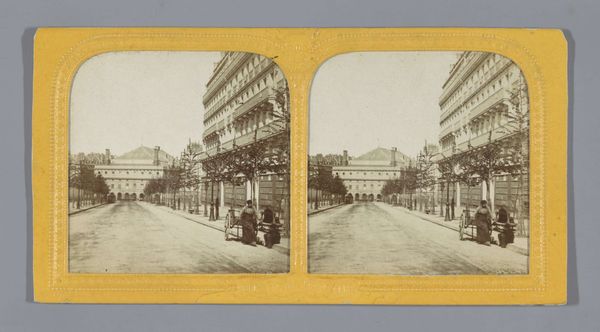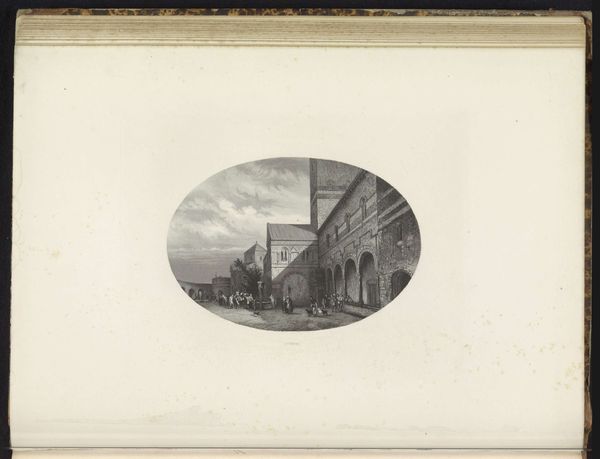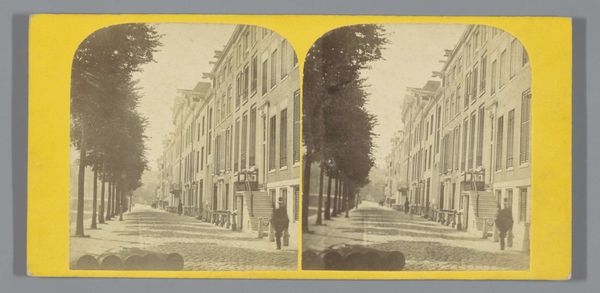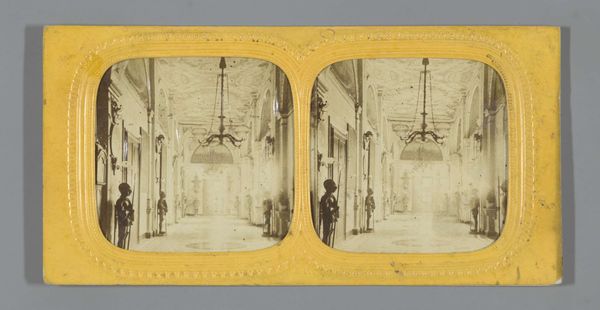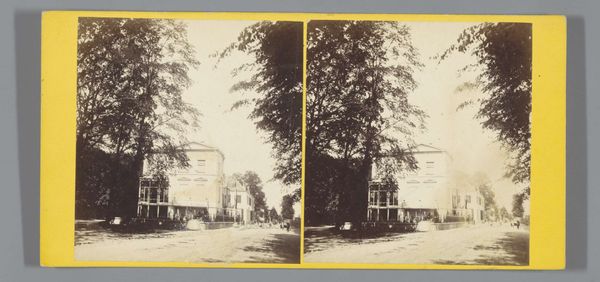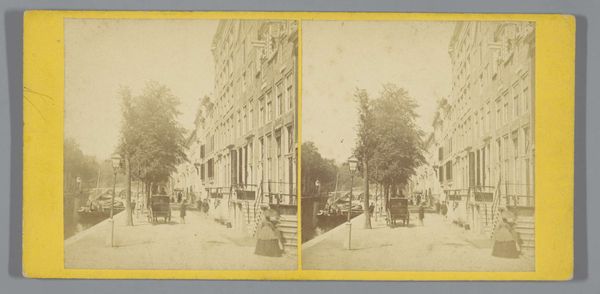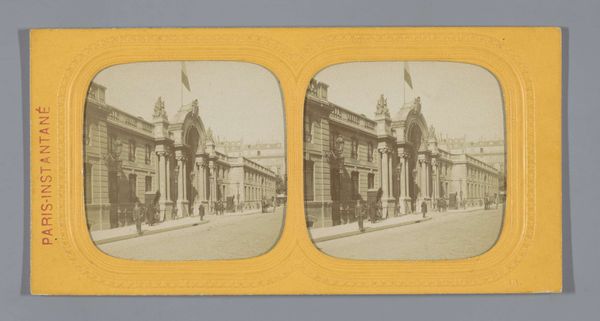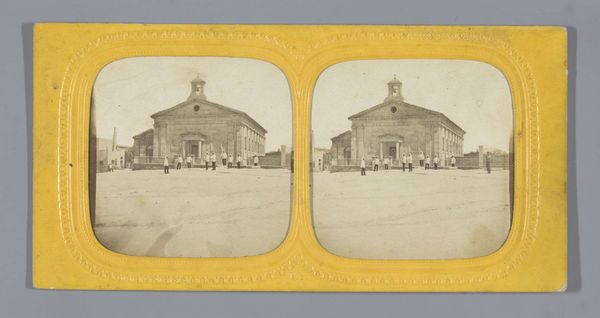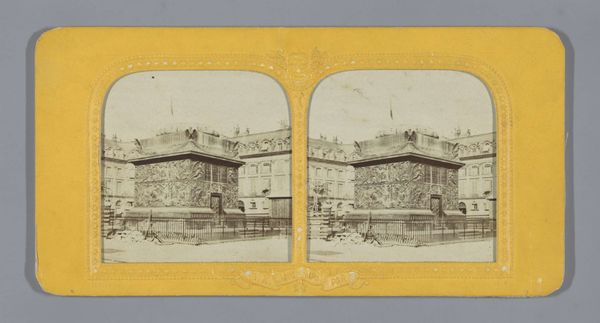
photography, albumen-print
#
photography
#
coloured pencil
#
cityscape
#
street
#
albumen-print
#
realism
Dimensions: height 87 mm, width 173 mm
Copyright: Rijks Museum: Open Domain
Curator: This is a stereo albumen print, dating from around 1855 to 1875, showing the Strada Forni in Valletta, Malta. Editor: It feels almost dreamlike. The muted tones, the precise geometry of the buildings receding into the distance…there's an odd serenity despite the urban subject. Curator: Precisely! This sense of order is very intentional. Note how the photographer, whose identity sadly remains anonymous, has framed the composition, with lines and repetition that contribute to an atmosphere of stability and timelessness. Editor: The figures also seem carefully placed. Their isolation highlights questions of identity, colonialism and cultural interaction during a period of immense transformation. Curator: Consider the vantage point. Elevated yet anonymous. Street scenes possess the potential to express cultural identity through the architecture depicted and, even moreso, through the representation of the populations that occupy them. Editor: But what isn't shown is equally important, the implied stories untold by these frozen people. How does power move within that carefully crafted street scene, I wonder. Who does this vision of Valletta serve? Curator: Valletta held strategic importance for several powers. Perhaps the composition conveys a sense of imposing power and permanence – reflecting how empires project influence and a sense of everlasting dominion? Editor: And maybe this stillness is actually hiding something - obscuring voices, silencing protest. Or even the day to day struggles. What the image excludes forms a significant narrative, perhaps mirroring a collective cultural amnesia around the complex identity and place. Curator: A compelling reading! Thinking of collective memory, how might we interpret those repeating architectural elements? Do they symbolise a common past, a shared experience of the built environment. It's really so important to allow historical artifacts to speak about a specific era and time to our current global community. Editor: And maybe prompting us to see how much those structures endure - not unchanged or immutable - but as stages for the persistent dramas of power and identity. The street endures but never stands still. Curator: I'm intrigued by this sense of enduring presence - how photography attempts to preserve the past while implicitly revealing our ever-changing perceptions. Editor: Ultimately, this journey challenges our vision - the real and imagined - inviting an endless exchange between the eye, history, and power, wouldn’t you say?
Comments
No comments
Be the first to comment and join the conversation on the ultimate creative platform.
